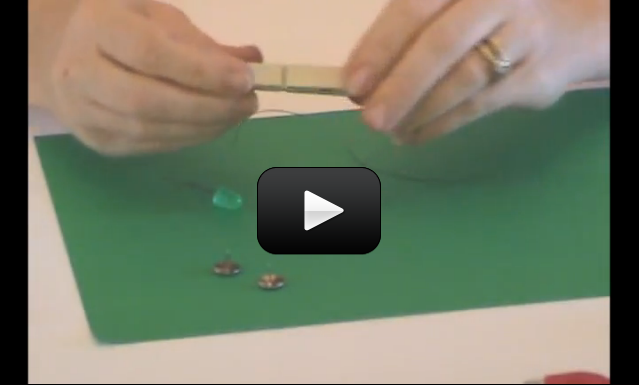Burglar alarms not only protect your stuff, they put the intruder into a panic while they attempt to disarm the triggered noisemaker. Our burglar alarms are basically switches which utilize the circuitry from Basic Circuits and clever tricks in conductivity.
A complete and exhaustive description of electronics would jump into the physics of solid state electronics, which is covered in undergraduate university courses. Instead, here is a quick description based on the fluid analogy for electric charge:
The movement of electric charge is called electric current, and is measured in amperes (A, or amps). When electric current passes through a material, it does so by electrical conduction, but there are different kinds of conduction, such as metallic conduction (where electrons flow through a conductor, like metal) and electrolysis (where charged atoms (called ions) flow through liquids).
Why does metal conduct electricity? Metals are conductors not because electricity passes through them, but because they contain electrons that can move. Think of the metal wire like a hose full of water. The water can move through the hose. An insulator would be like a hose full of cement – no charge can move through it.
Please login or register to read the rest of this content.


Magnet wire isn’t practical for this because that wire has an enamel coating and we need to use bare wire for this project. In order to use magnet wire, you would have to use sandpaper to remove all the enamel from the wire.
Do you have to use steel wire? Or can you use magnetic wire? Thanks
This actually has to do with the design of the chip for each LED. Both clear and colored LEDs can have chips that are very bright. The blue LEDs in Brian’s kits are designed to be particularly bright. But, as you mentioned, the color does have something to do with this. Our eyes are more sensitive to certain colors.
Keep in mind that the LED experiments in Unit 10 must be done with carbon batteries (AKA “heavy duty”) NOT alkaline batteries. Alkaline batteries provide way more current, which requires the use of resistors.
I tried all the LEDs in Brian’s electronics kit and the clear LEDs were the brightest. Does the color of the bulb have anything to do with it? Maybe only one wavelength of light is allowed to pass through the colored bulb and so the color is dimmer?
If you continue to have problems getting this to work, please take some pictures of your setup and email them to [email protected] and I’ll try to help.
The little wooden clothes, pin, and the tax we do not have. Instead, we used a chip clip and a couple pieces of foil to wrap around the copper wire. We thought that might work, and we use ribbon for the tripwire, but for some reason while we were connecting like the alligator wires it would not buzz we use the buzzer, but we did not try the lights yet. We were able to get the buzzer to work before we started adding the copper wire.
what is a light dependent resistor? (LDR)
Yes, but you’ll need more LEDs in series since one LED is usually rated for less than 3 V, so it’ll burn out if you use 9V to power just one LED.
Can this be made with the 9v battery instead of AA?
Yes – you can wrap each jaw of the clothespin with aluminum foil instead. Just make sure it makes good contact with the wire (use a piece of tape to secure the wire in place on top of the foil). Have fun!
Caleb is on a roll with projects this morning, but we don’t have any tacks … is there anything that can be substituted?
Thank you so much!
Check the shopping list – you should see a direct link to where you can order it online or at Radio Shack.
Where can you get the materials for the trip wire burglar alarm? Especially the buzzer?
This question was made by Skylar. 😉
Shannon Wade wrote: “When I pushed the tacks in, the top half of the clothespin kept on sliding to one side. how do i prevent this?”
Yes, this sometimes happens if you have a clothespin made of HARD wood. Try finding the cheap ones made of soft wood like balsa if you can find it. OR… simply predrill your holes with the smallest bit you can find. Just start the drill on the outside top of one side and drill all the way through both jaws at the same time. Use a dab of hot glue on the outside of each jaw to keep the tack from slipping back through if your drilled hole is too large. Be very careful not to get any hot glue between the tack and the wire conection, though, or you’ll break the metal-to-metal contact and the trip wire won’t work.
when i pushed the tacks in, the top half of the clothespin kept on sliding to one side. how do i prevent this?